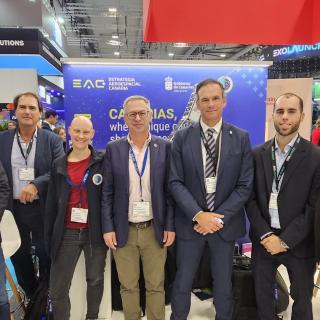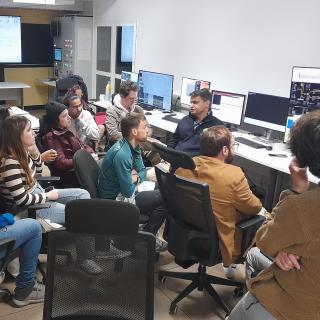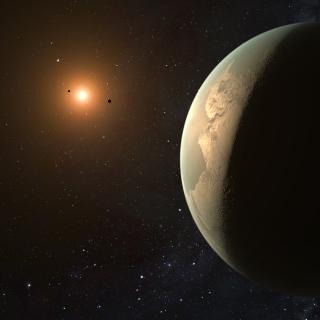It may interest you
-
 The Instituto de Astrofísica de Canarias (IAC), through IACTEC-Space, is participating this week in Space Tech Expo Europe, the largest space industry trade fair on the continent, held in Bremen from November 18 to 20. The team is located in the Spain Space pavilion, alongside the Canary Islands Aerospace Strategy (EAC), to showcase the technological developments of the CELESTE laboratories and strengthen international collaborations in the space sector. The I nstituto de Astrofísica de Canarias (IAC) is participating once again in Space Tech Expo Europe, the leading event for the spaceAdvertised on
The Instituto de Astrofísica de Canarias (IAC), through IACTEC-Space, is participating this week in Space Tech Expo Europe, the largest space industry trade fair on the continent, held in Bremen from November 18 to 20. The team is located in the Spain Space pavilion, alongside the Canary Islands Aerospace Strategy (EAC), to showcase the technological developments of the CELESTE laboratories and strengthen international collaborations in the space sector. The I nstituto de Astrofísica de Canarias (IAC) is participating once again in Space Tech Expo Europe, the leading event for the spaceAdvertised on -
 The EU-funded EDUCADO project (Exploring the Deep Universe by Computational Analysis of Data from Observations) at the Instituto de Astrofísica de Canarias (IAC) is organising a two-night astronomical observation school providing hands-on research training for early-stage researchers in astronomy and computer science. The program will convene 15 doctoral candidates from across Europe for an immersive, interdisciplinary learning experience. Attendees will engage in night time astronomical observations utilizing state-of-the-art telescopic instrumentation, guided data analysis workshops, andAdvertised on
The EU-funded EDUCADO project (Exploring the Deep Universe by Computational Analysis of Data from Observations) at the Instituto de Astrofísica de Canarias (IAC) is organising a two-night astronomical observation school providing hands-on research training for early-stage researchers in astronomy and computer science. The program will convene 15 doctoral candidates from across Europe for an immersive, interdisciplinary learning experience. Attendees will engage in night time astronomical observations utilizing state-of-the-art telescopic instrumentation, guided data analysis workshops, andAdvertised on -
 An international team, led by a student from Instituto de Astrofísica de Canarias (IAC), has detected a super-Earth orbiting in the habitable zone of GJ 3998, a nearby red dwarf located 59 ly away. The new planet, named GJ 3998 d, is the third planet found in the system. ‘GJ 3998 d is a welcome addition to the planetary census of our cosmic neighbourhood’, states Atanas Stefanov, a "La Caixa" funded PhD student at the IAC and the University of La Laguna (ULL) and the study’s lead author, published in Astronomy & Astrophysics . 'This super-Earth appears to be in the habitable zone of one ofAdvertised on
An international team, led by a student from Instituto de Astrofísica de Canarias (IAC), has detected a super-Earth orbiting in the habitable zone of GJ 3998, a nearby red dwarf located 59 ly away. The new planet, named GJ 3998 d, is the third planet found in the system. ‘GJ 3998 d is a welcome addition to the planetary census of our cosmic neighbourhood’, states Atanas Stefanov, a "La Caixa" funded PhD student at the IAC and the University of La Laguna (ULL) and the study’s lead author, published in Astronomy & Astrophysics . 'This super-Earth appears to be in the habitable zone of one ofAdvertised on
